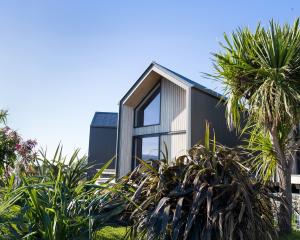
Regular, expert skin screening is a very simple way to reduce these statistics. Just as most of us have other annual health checks, getting your skin mole-mapped every year or two is essential - especially if you’re fair-skinned, have a lot of moles, have a family or personal history of skin cancer, have been sunburned in the past, or have an outdoors lifestyle.
MoleMap – your skin’s best chance

MoleMap’s proven system combines the latest technology with head-to-toe skin mapping by specialist Melanographers (accredited skin cancer nurses) and expert diagnosis of any suspicious moles by expert Dermatologists. Together with using SunSmart measures every day, it’s your skin’s best chance against melanoma.
Gore Health – Southland’s MoleMap experts
Gore Health holds the MoleMap franchise from Ashburton South, with seven Melanographers (specialist skin cancer nurses) around the region to ensure our patients can easily access our clinics.
In Invercargill, Queenstown and Gore, our MoleMap clinics are held weekly, while in Dunedin, our clinics operate from Monday to Thursday (soon to be extended to include some Saturdays!). Our Ashburton and Timaru clinics are held in blocks of six to eight days per month, and we also operate smaller clinics in Wanaka, Oamaru, Balclutha, Te Anau, Clyde, Twizel and Fairlie – so there’s sure to be a clinic near you!
What’s more, our Melanographers are also experienced working with businesses to provide MoleMap skin screening and education to their staff as part of their workplace wellness programme – either onsite or we can provide vouchers so your staff can visit our clinics.
3 skin cancer detection services to choose from

Skin Check+ is a new service that includes a head-to-toe skin cancer check as well as total body photography to compare any changes in the skin at a later date – while Skin Check is an affordable option for anyone who is concerned about a mole, or wants the reassurance of a point-in-time skin check.
Tips for protecting your skin
At MoleMap, we recommend that our patients self-check their skin regularly between professional skin checks – at least every 2 to 3 months.
Look for any new moles or changes to existing moles, such as an uneven shape or colour, irregular borders, moles that are itchy, scaly or bleeding, are elevated and/or firm to touch, and/or are growing or changing rapidly. If you notice anything unusual, get it checked by experts as soon as possible – melanoma is relatively easy to treat if it’s detected early enough.
It’s also important to protect your skin from New Zealand’s harsh summer sun: apply a broad-spectrum, SPF30+ sunscreen, stay in the shade whenever possible, and cover up with a broad-brimmed hat, sunglasses and long-sleeved clothing.
Do you know your skin cancer risk?
It’s a common misconception that melanoma only affects ‘old people’ – and it’s true that most melanomas are found in people aged 50 years or older.3 However, anyone can get melanoma, including younger people. In New Zealand, melanoma is the third most commonly registered cancer in young women, and the fourth in young men aged 0 to 24 years.4
What’s more, getting sunburnt as a young person can ‘lay the groundwork’ for skin cancers in later life, including melanoma. In fact, the latest research shows that sun exposure in childhood gives a greater risk of melanoma than sun exposure in later life.5 And it all adds up: recent research shows that the more time you spend unprotected in the sun (even for short bursts), the higher your risk of melanoma.6
You can check your skin cancer risk level at https://www.molemap.co.nz/myrisk. To book an appointment, see www.molemap.co.nz or call us on 0800 665 3627.

Sources: 1. Melanoma NZ: https://www.melanoma.org.nz/facts-risk-factors 2. Ministry of Transport: https://www.transport.govt.nz/mot-resources/road-safety-resources/road-d... 3,4. Melanoma NZ: https://www.melanoma.org.nz/be-informed/understanding 5. Skincancer.org: https://www.skincancer.org/skin-cancer-information/skin-cancer-facts/ 6. Cancer.org: https://www.cancer.org.au/news/media-releases/one-in-two-aussie-sunburns...













